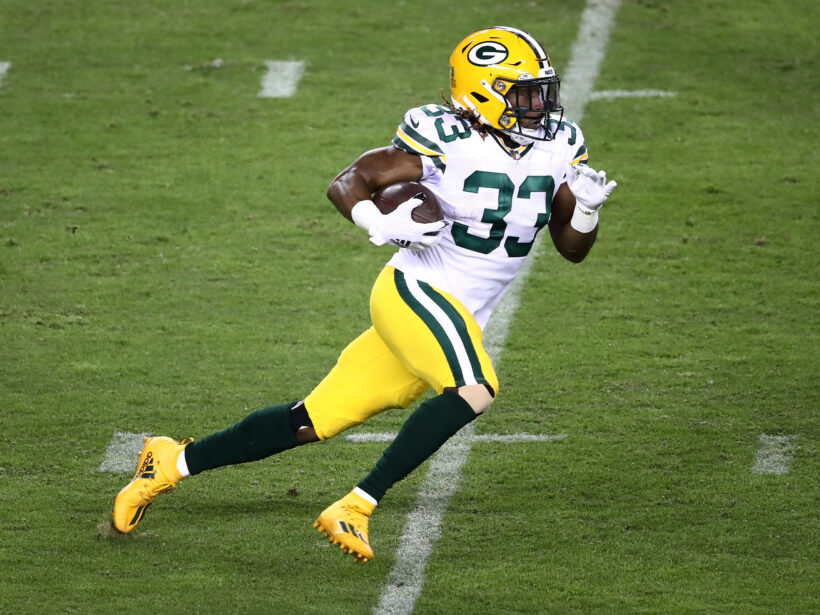The Packers’ run game will be crucially important this season. With the receiver corps made up of just a bunch of guys, the offense will live and die with the run game and the play action game opening up based on it.
Under Matt LaFleur, the run game has better than it was under McCarthy, but still never quite as good as you’d like. Last season the team had the 8th best run game based on DVOA and 6th best based on EPA (note that they had a negative EPA), that’s good but it was with the best RB duo in the league, best QB, best WR, one of the best offensive lines as a unit, and an offense built around the run game. It can certainly get better. Let’s go over a few ways that they may improve.
More man blocking
When Josh Myers was drafted last year, many draftniks were surprised to see him go that early. Gutekunst addressed the pick by praising Myers size and strength. This season, almost the same argument was made for guard/tackle Sean Rhyan. These are the types of players you would’ve seen on the Ravens or the 49ers Harbaugh teams—not on traditional wide zone teams.
LaFleur and Stenavich (who has a background with this type of run game) can use these guys to move people in the run game with man blocking and power schemes.
Other Shanahan tree members have started using these types of runs, if not these types of players, already which brings to mind another easy change. The team barely used any shifts, motion, jet sweeps, basically anything from the misdirection handbook last year. As a result, opposing linebackers almost always knew where the run was coming from and where it was going. Getting more diverse with the types of runs and the strategies use for misdirection will help.
Spread ‘em out
An obvious way to improve the run game is to lighten the box. The Packers could go with Lazard, Watkins, Cobb, and Watson on the field and run the ball. Each of those receivers are plus run blockers. Three of them are plus runners on quick screens. Use four wide receiver sets to challenge the defense. Do they lighten the box and risk trying to stop AJ Dillon with a 190 lb safety coming down hill? Do they try to split the difference and get chewed up with screens and play action shots all day?
Even better, swap one of the receivers out for Aaron Jones. Spread the defense out with three receivers and two running backs. Corners aren’t going to tackle Jones on a quick out or a screen and linebackers aren’t going to stick with him on fade routes. Get him going from the slot and then go no huddle and shift him into the backfield with Dillon as a lead blocker.
Cut back on the RPOs
The LaFleur era Packers have led the league or been second each year in RPO usage. QB coach Luke Getsy and Offensive Coordinator Nate Hackett both majored in the concept and LaFleur himself was no stranger after helping merge the Baylor and Shanahan offenses in Washington and then coaching in college for a year at Notre Dame.
The RPO was an ideal way to use Rodgers ungodly ability to read defenses and get the ball unto Davante Adams’ hands without having to worry about him being double teamed. It wasn’t great for the run game though.
Constantly passing the ball on RPOs wreaks havoc on the back’s ability to get in a groove and also may make the linebackers less likely to bite on future play actions. I’m sure we can all remember countless times over the past few years when it was time to run the damn ball and Rodgers missed the receiver on a quick screen or the receiver got tackled immediately and all of a sudden it was second or third and long.
Cutting back on the P portion of RPOs will help the team stay ahead of the sticks and help the running backs get some momentum going.
Mike Price is a lifelong Packers fan currently living in Utah. You can follow him on twitter at @themikeprice.
——————

